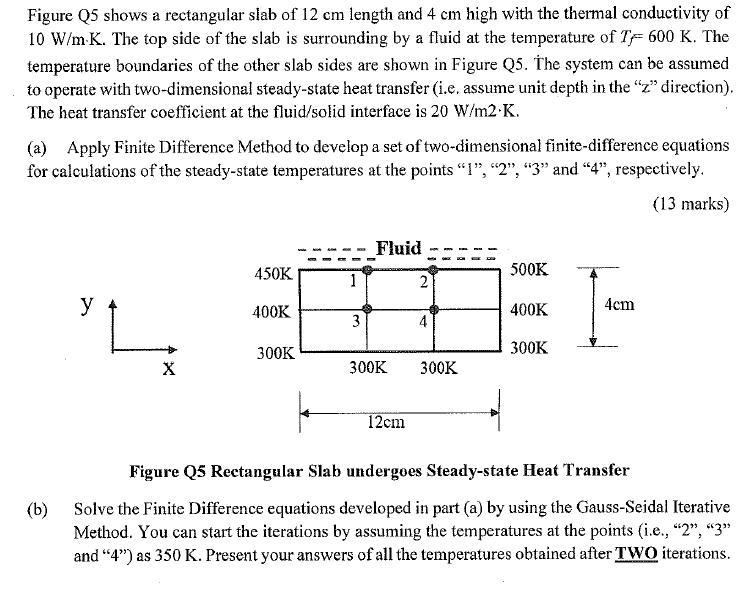Answered step by step
Verified Expert Solution
Question
1 Approved Answer
Figure Q5 shows a rectangular slab of 12 cm length and 4 cm high with the thermal conductivity of 10 W/m K. The top

Figure Q5 shows a rectangular slab of 12 cm length and 4 cm high with the thermal conductivity of 10 W/m K. The top side of the slab is surrounding by a fluid at the temperature of T 600 K. The temperature boundaries of the other slab sides are shown in Figure Q5. The system can be assumed to operate with two-dimensional steady-state heat transfer (i.e. assume unit depth in the "z" direction). The heat transfer coefficient at the fluid/solid interface is 20 W/m2.K. (a) Apply Finite Difference Method to develop a set of two-dimensional finite-difference equations for calculations of the steady-state temperatures at the points "1", "2", "3" and "4", respectively. (13 marks) (b) y $4 X Fluid 2 =COD= 3 4 300K 300K 450K 400K 300K 12cm 500K 400K 300K 4cm Figure Q5 Rectangular Slab undergoes Steady-state Heat Transfer Solve the Finite Difference equations developed in part (a) by using the Gauss-Seidal Iterative Method. You can start the iterations by assuming the temperatures at the points (i.e., "2", "3" and "4") as 350 K. Present your answers of all the temperatures obtained after TWO iterations.
Step by Step Solution
There are 3 Steps involved in it
Step: 1
a Applying Finite Difference Method to the 2D steadystate ...
Get Instant Access to Expert-Tailored Solutions
See step-by-step solutions with expert insights and AI powered tools for academic success
Step: 2

Step: 3

Ace Your Homework with AI
Get the answers you need in no time with our AI-driven, step-by-step assistance
Get Started


